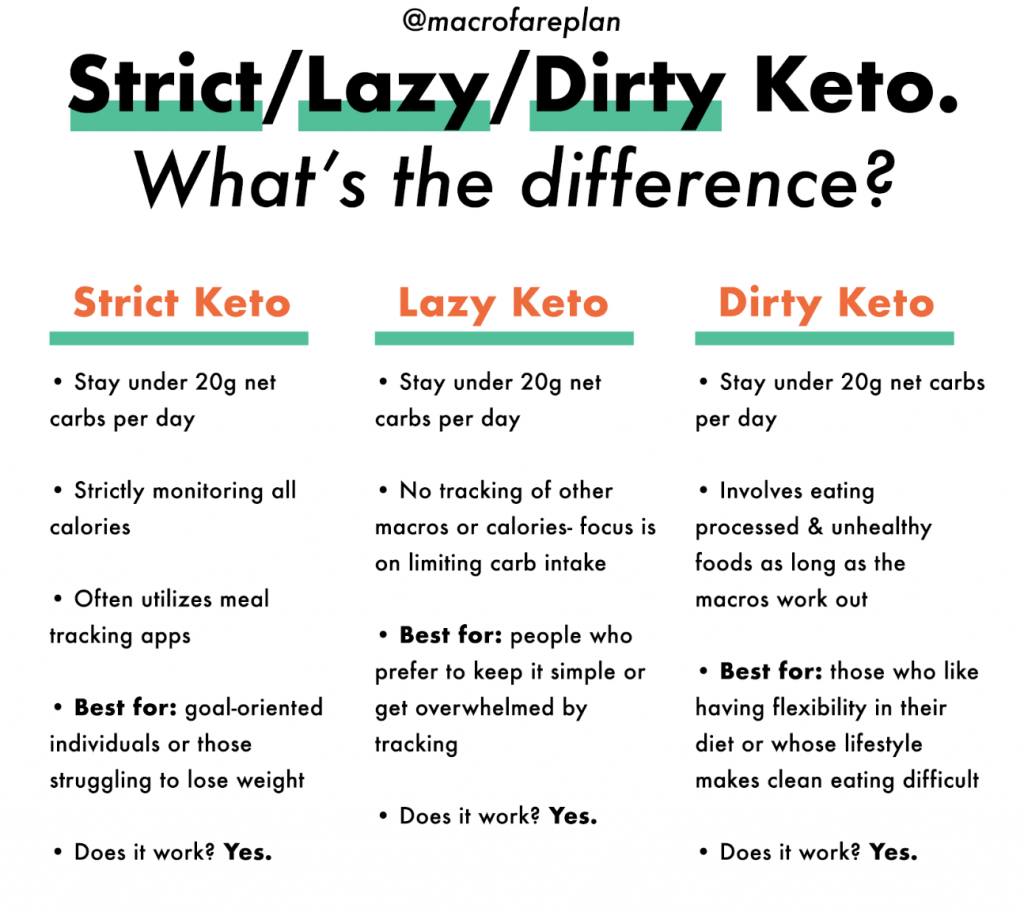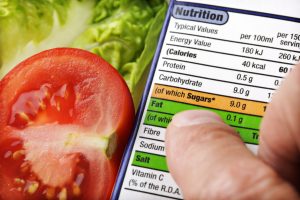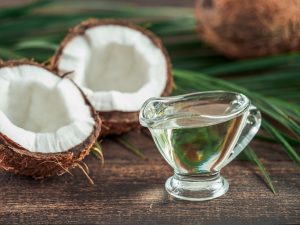As the keto diet has grown in popularity, more variations have popped up on how exactly you can follow this diet. While it started with a very strict low-carbohydrate way of eating, things like the lazy keto diet and the dirty keto diet have made keto a little more confusing for those who are interested in learning more about how this diet works.
In this article, you will learn about the different variations of the keto diet to see if one particular method works best for you.
Let’s start by talking about the traditional way of going keto, the strict keto diet.
What is the Strict Keto Diet?
The strict keto diet is the traditional approach to getting your body into ketosis. It involves lots of macronutrient tracking, staying below a set number of carbs each day (20-30grams), and is usually the keto diet that most people start out with. The strict keto diet is designed to help your body get into a state of ketosis and train your body to burn fat for energy. This is usually the traditional approach most people start out with.
On the strict keto diet, you may be restricting your carbohydrate intake anywhere from 15 grams per day, all the way up to 30 grams per day. However, this will vary from person to person. You will be eliminating foods like grains, sugar, most fruits, and starchy vegetables. Instead, you will be consuming things like meat, dark leafy green vegetables, cruciferous vegetables like broccoli and cauliflower, full-fat dairy products like butter, ghee, full-fat unsweetened yogurt, and heavy cream. Other healthy fats like coconut oil, nuts seeds, and avocados are also allowed. Things like berries are allowed, but in moderation, and low to zero carbohydrate sweeteners like stevia, monk fruit, and erythritol.
When first starting the strict keto diet, you will likely be doing quite a bit of macronutrient tracking until you get to a point where your body is in a state of ketosis, and you have found what works best for you. You will be eating roughly 70% of your calories from fat, 25% of your calories from protein, and only 5% from carbohydrates. There may be some tweaks you need to make, but this is generally where most people start.
What is the Lazy Keto Diet?
The lazy keto diet is just as it sounds, it takes a much more laid back approach than the strict keto diet. The lazy keto diet isn’t as strict in terms of tracking as the traditional version of the diet, which is why it may not be best for those who are first starting. Without properly tracking your macronutrient intake, it may be hard to get your body into a state of ketosis. However, someone who has been following a ketogenic for quite some time may do better taking a lazier approach that doesn’t involve a ton of tracking, but instead involves focusing on a very high-fat diet with very limited amount of carbs.
The lazy keto diet may be more sustainable for someone who wants to follow keto long-term. This is because it allows for the flexibility of consuming some foods that may not be approved when following a very strict keto diet. Things like low-carb tortillas or other low-carb items that may contain a small amount of added sugar are viewed as being ok on a lazy keto diet. Following a lazy keto approach also means that you can consume higher carbohydrate items so long as you are sticking to your carbohydrate goal of about 20-30 grams of carbs per day. If you are sticking to that number, then you will likely be able to stay in ketosis if you know what foods work best for your body.
Remember that this version of the keto diet is likely not best for beginners until you have a thorough understanding of how your body reacts to certain foods and you understand what foods are high in carbs and will throw you out of ketosis, and which foods are high in fat and should be added liberally to your diet. The lazy keto diet is more of a long-term approach for someone who wants a little more flexibility but still wants the benefits of eating low-carb.
What is the Dirty Keto Diet?
The dirty keto diet is yet another version of the ketogenic diet that involves eating some foods that may not necessarily be deemed “healthy” so long as you stick to the proper macronutrient breakdown of the strict keto diet. This means that so long as you are getting your 70% of calories from fat, 25% from protein, and 5% from carbs, it doesn’t matter where those macronutrients come from. This version of the diet is pretty much giving you permission to eat junk food so long as it is low in carbs.
There is one big problem with the dirty keto diet. While things like sausage, bacon, and other fried foods are ok once in a while, long-term and everyday consumption of these foods can lead to inflammation. Many people may also feel digestive upset after eating these foods which can make this diet not sustainable. You will also miss out on important vitamins and minerals you would get from a standard keto diet where you would be eating dark leafy greens and healthy fats. While you may lose weight on the dirty keto diet by simply restricting your carbohydrate intake, you most likely won’t experience some of the other benefits the strict keto diet has to offer like improved skin health, better sleep, and a reduction in cravings for sugar.
While this diet may be appealing due to convenience, it is not something you would want to follow long term as it definitely comes with some health risks.
Which Version Should You Try?
If you are interested in starting a ketogenic diet, you may be wondering what version you should try. To get started, it is recommended that you start with the traditional strict keto diet until you are completely comfortable with this new way of eating and how your body will respond. With time, you will know what foods are keto-friendly, what foods make you feel the best, and which to stay away from. At that point, you may decide to go for a “lazier” approach and skip some of the macronutrient calculations. The most important thing is to focus on getting nutrient-dense low-carbohydrate foods into your diet that are going to fuel your body best. Try to steer clear of fried and processed foods, and if you do enjoy these, do so sparingly.
Start with the more rigid strict keto diet and decide from there what is going to work best for you, your body, and your lifestyle.




